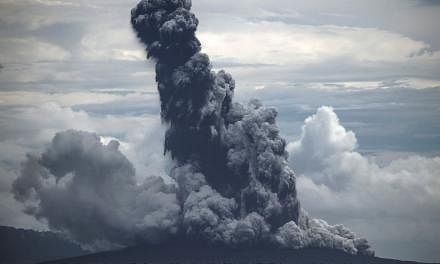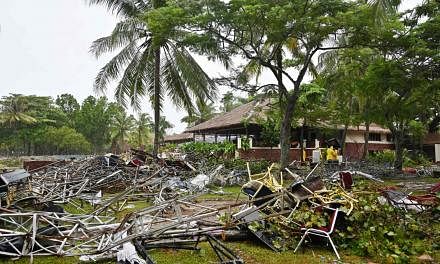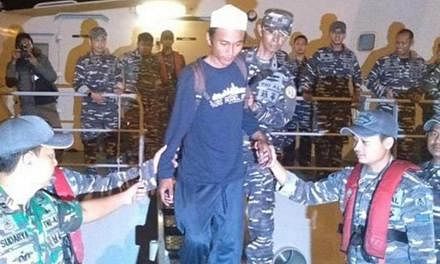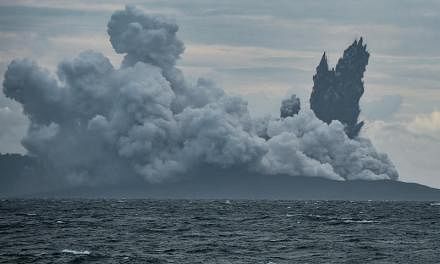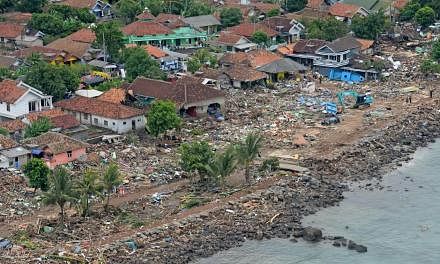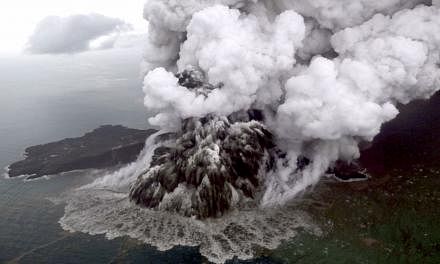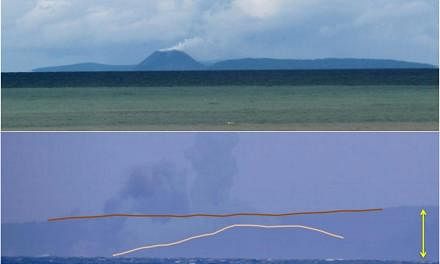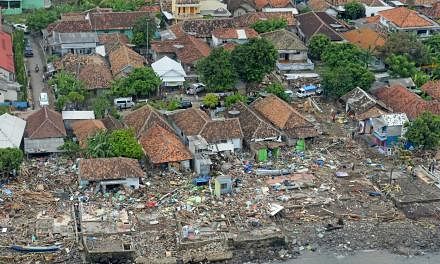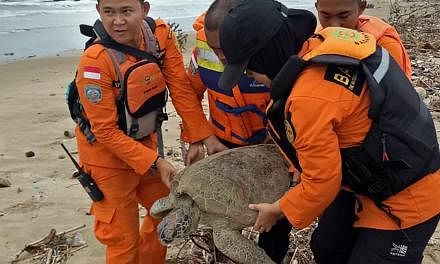JAKARTA - Geologists have urged that communities along the coastal areas facing the Sunda Strait and hit by last month's deadly tsunami be roped in to run their own tsunami warning sensors and undertake their maintenance as well.
They have also criticised the central government for failing to follow up on at least two studies by notable geologists, who had predicted the Anak Krakatau volcano could someday spawn a deadly tsunami.
In his call to involve the local communities, Dr Roger Scoon, a fellow of the Geological Society of London, said they "are more organised and technically skilled than we envisage and they could manage this well".
"Locally based sensors would do the trick," he added in a recent e-mail reply to The Straits Times.
The Dec 22 tsunami was triggered by a chunk of fiery Anak Krakatau collapsing and slipping into the ocean.
More than 400 people were killed and over 7,000 injured when the giant waves hit Banten and Lampung provinces, which are sited along the coastline of the Sunda Strait where the volcano island is located. The Strait separates Java from Sumatra.
All the dead and injured were Indonesians, many of whom were holidaymakers.
Indonesia's early warning system for tsunamis failed to raise the alarm because it is built to detect tsunamis from earthquakes, said its Meteorology, Climatology and Geophysics Agency. Last month's tsunami, however, arose from a volcanic eruption, which is not common in the country.
A tsunami warning system has two equally important parts: a network of sensors, which uses buoys or anchored floats, to detect abnormal changes in sea level, and communications infrastructure that issue alarms for people to evacuate.
To aggravate matters, vandals have persistently damaged or removed many of the buoys.
To overcome the problems, Dr Scoon said local residents could do the system's maintenance work, including guarding the warning equipment against vandalism.
While agreeing with Dr Scoon on roping in regional governments, Dr Danny Hilman Natawidjaja, of Indonesia's Institute of Sciences, said help from the central government is still needed, especially in the training and hiring of experts.
"Every region has its own characteristics that require specific designs of early warnings. To leave it all to the national government would overwhelm Jakarta. It's time regional governments take part and contribute," Dr Danny told The Straits Times.
"The corporate sector in each region could also contribute. For example, Banten province has a strong presence of companies in the chemical industry. Bear in mind a natural disaster could blow up their facility," he added.
The geologists, in blaming the Indonesian government for the Dec 22 disaster, pointed to several studies that accurately predicted the danger from the Anak Krakatau volcano.
A 2012 study said a tsunami could be triggered by a collapse of Anak Krakatau's flank as the volcano sits partly on a steep wall of the caldera resulting from the famed Krakatau volcano eruptions in 1883.
The study, done by geologists T. Giachetti, R. Paris, K. Kelfoun and B. Ontowirjo, was published in a journal of the Geological Society of London.
Using a numerical model, it simulates both Anak Krakatau landslides and the tsunami propagations, detailing the tsunami's possible travel time and wave amplitude when hitting various coastal areas.
It added that these areas include Sumur, Carita, Labuan and Anyer in Banten province, on the western tip of Indonesia's most populous island, Java, and parts of Lampung province, in the southern tip of the country's second-most populous island, Sumatra.
They were hit hardest by the Dec 22 calamity.
A similar study was done in Yogyakarta, using a tsunami simulation lab, said Dr Danny.
But Indonesia's national geological agency's secretary Antonius Ratdomopurbo, when contacted, said it was not possible to keep track of all the studies that had been done.
"There are a lot of them," he said. "One thousand pieces of research, and one of them is correct. How do we go about this?"
Disagreeing, Dr Scoon said the number of credible studies is very small.
"This (the 2012 study) is a top quality article in a reputable journal and it should have been given full attention," he added.
Agreeing, Dr Danny told The Straits Times: "There aren't many such research studies. Let the government and general public not being aware of such studies be our learning lesson."


